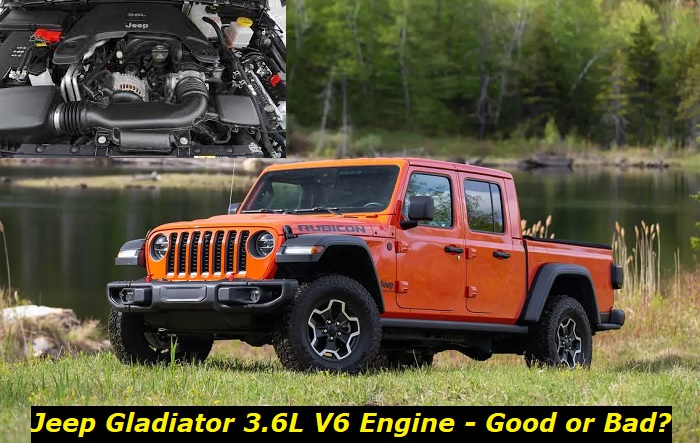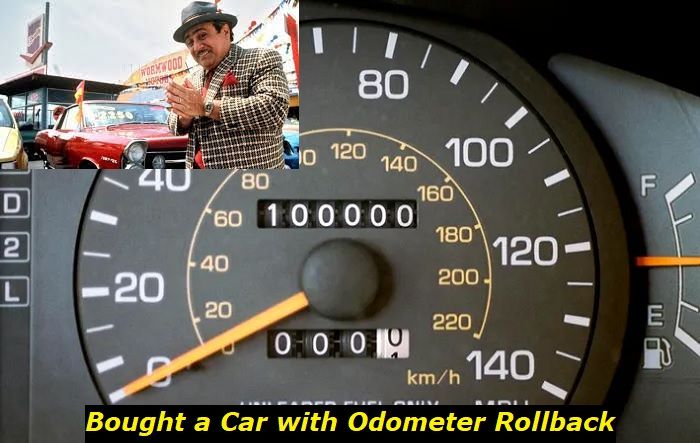The Jeep Gladiator is a relatively new model of the pickup truck based on the Jeep Wrangler's platform. This is the mid-size truck that has been selling pretty well in the US. The model has sold over 77,000 units in 2022 and more than 80,000 in 2021 (in the US). The Gladiator project started in 2019 and has been successful even though experts didn't take it seriously at first.
Today, we'll tell you about the 3.6L Pentastar V6 engine under the hood of the Jeep Gladiator. This is the well-known Pentastar engine and we'll cover its pros and cons for this model. Also, we'll see if it's a good choice for the Gladiator. We've prepared some surprising facts about the engine based on what buyers say online and what mechanics think in repair shops.

Key features and my opinion about the engine
- Production years:2010-now
- Average lifespan of Pentastar V6:220,000-250,000 miles
- Fuel supply type:port injection
- Power range:280-310 hp
- Fuel efficiency:bad
- Engine block material:aluminum
- Engine reliability score:high
- The most common problems:phasers aren't durable, software problems in early model years, the VVL system is not perfect, thermostat and water pump are weak.
Key facts about the 3.6L V6 engine in the Jeep Gladiator
We've already spoken about the Pentastar engine a lot of times. But now it's important to understand if this engine is actually good for the Gladiator. We should say that the other engine option in this model is the 3.0L diesel unit which is not very common in the US and seems to be a worse choice given it costs more than the good old Pentastar engine.
So, the 3.6L V6 under the hood of the Jeep Gladiator is the famous Pentastar engine offering pretty good reliability and great specs for this vehicle. It has enough power for the truck, its torque is available at low RPM and the ECU is programmed a little differently than for some other cars that are powered by this engine.
Here are some facts about the 3.6L Pentastar V6 in the Gladiator you should know:
- this version of the engine offers 285 horsepower and 260 lb-ft of torque - the torque may seem quite poor for a truck, but in reality, it isn't that bad;
- the engine is all aluminum, the timing system is driven by a chain, and there are hydraulic lifters, so no valve adjustment is needed;
- the Dual VVT phaser is presented (good news for new engines but after some miles, it will start getting on your nerves);
- the same engine has also been used in the Grand Cherokee, the Wrangler, and also in a lot of Chrysler models (Dodge, Fiat, and even Lancia);
- the engine is pretty simple in its engineering, so we can say it's a reliable choice, but it still has its share of problems;
- the gas mileage is something you shouldn't think about when you are buying this vehicle, it's 16 MPG in the city and up to 23 MPG on highways.
Well, now we see that the engine is not bad if you compare it with engines in other trucks available on the market today. The Pentastar V6 engine is good and durable. It will reach 60 mph speed for about 8.1 seconds if you believe the official measurements. Not bad for this car that has the aerodynamics of a brick.
When it comes to engineering, the Dual VVT system seems to be the weak link. Also, the chain is going to cause some problems when the engine has a lot of miles on it. But overall, this is a good choice for this vehicle. It won't offer a lot of efficiency and economy to you, but it will cover all your needs in this truck.
How many miles will the Pentastar V6 go?
The 3.6L V6 engine in your Jeep Gladiator will last approximately 200,000 miles with no major repairs. Its overall lifespan is thought to be about 300,000 miles. After this point, it's not wise anymore to keep this engine and try to make it work. But it's really a lot if you think about modern engines and their average durability of 150K miles.
The Pentastar engine in the Jeep Gladiator has nothing you should worry about within the first 100,000 miles of use. After that, some more responsibility is on you to maintain and repair the engine on time and not allow it to fail. But even with those little investments, this is a fair engine that is going to compensate for its money.
After 200K miles though you will have to deal with some more unusual problems that will need expensive solutions. Unfortunately, those problems are sometimes hard to even locate. Although the engineering of this engine is pretty simple, some units are hard to diagnose and repair. That's why you should keep in touch with the dealer in case you need professional help.
What are the common problems of the 3.6L V6 engine in the Gladiator?
Given this engine was installed not only in the Gladiator, we already know a lot about it. We've found literally hundreds of reviews from verified owners and we've also talked to mechanics who repair these engines. So, we now have the fullest database of its problems. Of course, we'll not write about all issues we've found but will only outline several problems that seem to be the most common for this powerplant.
Here are the most common issues, in our opinion:
1. Lubrication issues
Owners of older Pentastar engines have reported oil channels contamination which led to poor lubrication and quick engine wear. New engines made after 2016 also have this problem. It's not as massive as before but it still needs some attention.
If you get the oil pressure light on the dash from time to time, you should have your engine cleaned professionally. Also, avoid using any other type of oil but the recommended one. Oil channels are clogged with metal particles that are formed during engine wear. So, it's the issues that will attack engines after some miles, not from their first days of life.
2. Dual VVT, oil pump, and thermostat
These three factors we decided to combine into one big disadvantage. These modules work just fine but they don't last long. The oil pump may just fail suddenly without any signs or symptoms. Also, the thermostat can get stuck open or closed causing engine overheating or too long warming up.
The phasers are not durable and they are pretty expensive to replace. Any repair in this engine will cost you quite a lot but phasers are surprisingly expensive. Also, the new phasers will still not live as long as you may expect them to live.
All these minor problems can easily lead to major issues if not addressed quickly and correctly.
3. Oil leaks
This engine is known for a lot of oil leaks. The most common is the leak from the seal of the oil cooler. But this is not the only place to pay attention to. You should check for leaks at every regular maintenance. Otherwise, the vehicle may develop low oil levels and eventually the engine will fail and require extremely expensive repair.
4. Chain problems
Although this engine uses a reliable chain, it's not eternal. At 100,000 miles, it's better to replace it with the new one. This will prevent the chain from stretching, rattling, or even breaking. If the chain jumps a tooth or two, it's inevitable that pistons will hit over valves and then you will need to repair the head and the block. It's hard to imagine how much money you will need to make them run again.
5. Loss of power and harsh work
This problem is going to follow your 3.6L V6 Pentastar engine in the Jeep Gladiator wherever you go with it. Hundreds of owners report these issues. They may happen because of a bunch of different problems with sensors, software, ECU, spark plugs, coil packs, etc. Locating the problem and dealing with it is only possible with the help of professionals. Unfortunately, you will not be able to solve the issue by yourself.
How should you care about the 3.6L V6 Pentastar engine in the Gladiator?
Maintenance is the key to success, in this case. Maintaining the V6 engine in the Jeep Gladiator is not that easy and not cheap at all. You will have to buy OEM parts and high-quality fluids to allow this engine to work properly. Otherwise, the unit may just die prematurely and leave you with a huge bill from a repair shop in your hands.
Change oil and filters regularly, repair all the minor issues once they start bothering you, and pay attention to all changes that may happen with your engine. Also, never ignore leaks, strange sounds, vibrations, and other suspicious factors.
By following these tips, you'll be able to prolong the life of your 3.6L V6 engine and keep driving it without any problems. But when you cross the 200,000-mile line, better think of selling the Gladiator and buying something else instead.
About the authors
The CarAraC research team is composed of seasoned auto mechanics and automotive industry professionals, including individuals with advanced degrees and certifications in their field. Our team members boast prestigious credentials, reflecting their extensive knowledge and skills. These qualifications include: IMI: Institute of the Motor Industry, ASE-Certified Master Automobile Technicians; Coventry University, Graduate of MA in Automotive Journalism; Politecnico di Torino, Italy, MS Automotive Engineering; Ss. Cyril and Methodius University in Skopje, Mechanical University in Skopje; TOC Automotive College; DHA Suffa University, Department of Mechanical Engineering






Add comment